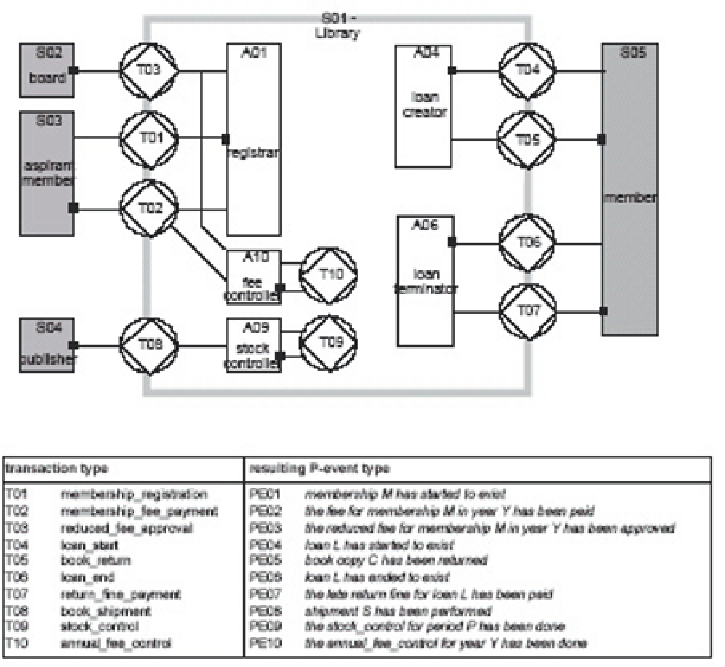Database Reference
In-Depth Information
Figure 3: DEMO Construction Model (CM) of the library
The complete model of the B-system of an organization in DEMO is called the
es-
sential model
of the organization. It consists of an integrated set of four aspect models: the
sential model
Construction Model
(CM), the
State Model Action
Model
(AM). The CM shows the actor roles and the transaction types in which they play (as
Process Model
(PM), the
State Model
(SM), and the
Model
initiator and/or executor). The AM specifi es the action rules that the actors apply in carrying
out their transactions. Based on the AM, the PM shows how the transaction types are causally
and conditionally related, and the SM models the fact types that are created and/or used in
carrying out the transactions. Only the CM and the SM are elaborated in this chapter.
Figure 3 shows the CM of the library case. The diagram (an Actor Transaction Diagram)
shows the actor roles, transaction types, and the relationships between them (i.e., which actor
roles are initiator and/or executor of which transaction types). An actor role is represented
by a box; the transaction symbol is a diamond (production) in a disk (coordination). The
small black box denotes which actor role is the executor of a transaction type. The boundary
of the considered part of the library is represented by the gray-lined open box. Actor roles
inside the boundary are elementary actor roles—they execute exactly one transaction type.
Actor roles outside the boundary are (by defi nition) non-elementary, so-called system actor





